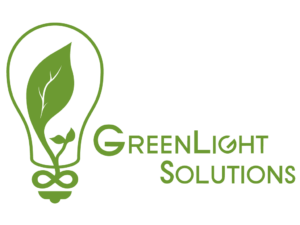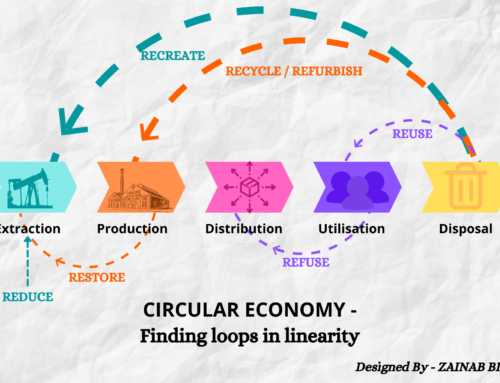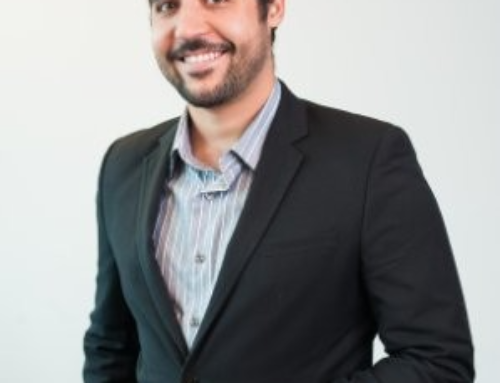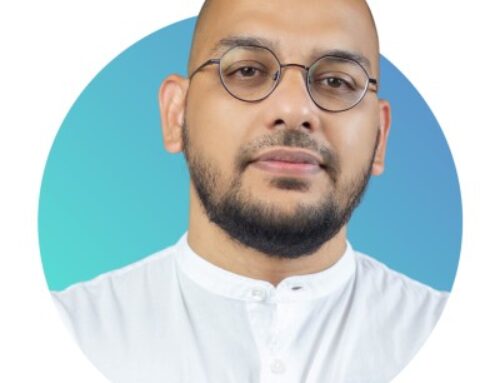Thank you for joining me as we learn all about GreenLight Solutions. What you’re reading is a transcribed conversation between Kevin Keleher, the founder of GreenLight, and myself, a first-year GreenLight Solutioneer, about how GreenLight came to fruition, and how it has made a name for itself.
VISION
Jacob Stillwell (JS): So, Kevin, what was the ‘lightbulb moment’ for GreenLight? What made you go ‘aha! I want to spend seven years developing this!’?
Kevin Keleher (KK): I have to go way back to answer that. Many people know it was a huge part of my Senior Thesis at ASU, but that ‘lightbulb moment’ goes way back. I had just graduated high school, and my cousin asked me, ‘So, Kevin, when are you going to run for President?’ and I said, ‘As if! I don’t want that job!’ because I saw that money was a massive influencer in politics. What I realized, though, was that money was also an enormous part of business, and also sustainability. What came about was this desire to change the system without needing to work in the broken system. So, I decided ‘I want to transform business.’ I saw that there was a need, and there was an opportunity to make a difference. If I can’t figure out a way to change the entire world, how about I start with this one idea? So, I was living on my own, I was figuring out what I wanted in life while going to community college, and I had been learning about sustainability in Phi Theta Kappa. During my time volunteering, I was a part of creating the first Gold-Certified sustainable building by LEED certification standards at the Red Mountain campus.
JS: I used to ask in school, ‘when are we going to use this, anyway?’ Right here! GreenLight! I’ve seen people graduate and get careers and make a difference, but it is so cool to see how GreenLight allows students to put their passion and knowledge to work. Thank you for sharing that origin story! So, where did you start with this vision? How did you take this dream and formulate it towards being what GreenLight is today?
KK: Through Phi Theta Kappa, I achieved recognition at the national scale for the work I was a part of, which allowed me to choose where I wanted to go for my bachelor’s degree. I thought about Columbia, Stanford, Berkeley, and a few others, but ASU has the best sustainability school in the west. With W.P. Carey being such a strong school and the Honors College at Barrett bringing the academic rigor, I found the next chapter of my career through Arizona State. My experience at Mesa Community College stuck with me. About halfway through ASU, an alumnus, Max Scott from Change Maker, approached me and brought me into the entrepreneurial world a little more. So, at this point, I am helping to start businesses, as well as consult businesses. Max called me up and suggested that I help with coordinating some students to help a non-profit with this sustainability project. It lined up perfectly with my vision for changing business. Businesses are lacking in sustainability expertise, and I now had all of the pieces!
MISSION
JS: You were on a mission, though. You saw the opportunity, and the problem now was to figure out how to make it happen?
KK: I was on a mission! Still, even before my thesis, we ran into an instance where a business wanted to hire us to produce a sustainability report, and they couldn’t! We didn’t have a business entity yet. So, the mission became figuring out how to organize students in a structure that allows businesses to apply for a project partner position and then coordinate the students and partner business to enable the magic to happen. The passion from the students is there; we know that. The need from the companies is there too. The issue was this administrative middle-ground between the students and businesses. Trying to figure out how we can make this an educational experience for the students while generating value and injecting it into the heart of local business in the valley was where the work was. After we threw something together, we finished that project that the company proposed to us. When we delivered it to the Public Works division of the City of Phoenix, we felt the value in what we had done. We thought, you know what; this is something we can bring to other students.
JS: So, this is where the mission became specific objectives then?
OBJECTIVES
KK: You’ve got it. We now had the Vision, and the Mission was to deliver this value to students and businesses, and now came the Objectives of actually doing it. We put it together as a student organization through ASU and got some funding. Our first semester, we went from our small team to 20 Solutioneers working on four separate projects. That semester we came up with the GreenLight Guidelines first draft.
JS: You all went from almost actualizing the GreenLight Foundation, but not quite, to having delivered solutions in just two semesters. That pretty well shows how valuable this channel of sustainability consulting and student led projects is. The world was ready for it!
STRATEGIES
JS: So within this larger objective of delivering value to students and businesses, what are some of the projects that were especially effective at implementing the GreenLight Guidelines?
KK: We are proud of all of our projects! A few come to mind, though, bearing in mind that we’ve done about 45 projects with local businesses throughout Arizona. The Build Us H.O.P.E project was fantastic. H.O.P.E is an acronym for Housing Opportunities Provided for Everyone, and we partnered with Elizabeth Singleton. So, she had this vision of building tiny homes for homeless veterans, and she found an organization to donate 100,000 dollars, and we were able to provide all of the projects to source materials, help with construction, and even build a community garden. That project had a considerable impact and outstanding results, and we’re proud of that one. Another project was the Tiger Mountain Project, which is an organization that helps to reduce recidivism, or the rate for citizens that go back to prison after leaving prison. They work to give people a new sense of community and purpose. So, it’s a super great organization. In downtown Phoenix, some of those communities have the highest rates of recidivism in the nation. So, one of the projects we did with them was helping them to qualify for a ton more grant money. Our Solutioneers discovered that when you are an organization like Tiger Mountain, the vast majority of their work is volunteering and donations. What our Solutioneers found out was that you could track and record donated volunteer hours monetarily. They found that the foundation has well over the typical threshold for many grants and GreenLight increased the available funding substantially. We’re incredibly proud of that one. And it was done pro-bono. Everyone got value out of that project, and it was just the community raising the community.
TACTICS 1.1
KK: Complimentary to talking about the benefits to businesses; there’s also the benefit for the students. As far as I am aware, with our Solutioneers, GreenLight is the primary topic of conversation for job interviews. The experience that Solutioneers get is something that is usually only given during a senior thesis or a master’s degree or internship. While we are very selective about who we let in to keep our standards high, we don’t have a limit on the number of projects that we will implement. So, while internships and theiseses are much more limited in their occurrences, GreenLight allows it to happen for many students on a semester by semester basis. You could build a portfolio with GreenLight, and it’s hard to put a dollar amount on that kind of resume building. When you’re trying to differentiate yourself in a competitive job market, you can say ‘not only have I walked the walk, but I know this project management methodology, and I know how to work with a team.’ That plus the benefit of the GreenLight network makes our Solutioneers sought after in the job market.
JS: So you can stick with GreenLight, even after graduating?
KK: It has happened! We want to put GreenLight to work in innovative ways, and I think it is an excellent idea for Solutioneers to keep GreenLight in mind as they apply for jobs and projects. Remember, GreenLight was a project for me in College. It’s the natural flow of things for others to do the same and implement GreenLight into their future working lives. It’s a network! One Solutioneer, Devin Edwards, was a dynamic and forward-thinking guy, and he was passionate about sports. So, he saw GreenLight as a tool and a network, which is what it is. A tool, a vehicle, Devin saw GreenLight in a way that could help carry him towards his aspirations. He said, ‘I love sustainability and sports,’ so he went and did informational interviews and networking and put together a project with the Tennis Legacy Fund. He was the project lead, and they put together a guidebook for sustainable tennis facility management. Fortunately, one of the board members of the Tennis Legacy Fund is the Director of the Corporate Eco Forum out of LA. Devin got hired directly out of college publishing with them. He’s just one example. Every Solutioneer can strive for leading a project and working with a project partner.
TACTICS 2.1
JS: So you’ve mentioned these opportunities for students and project partners after working with GreenLight, but obviously, a student has to make it into GreenLight first. So, when somebody is preparing for the application process, how could they frame themselves or get chosen to be a GreenLight Solutioneer?
KK: Well, first of all, we are non-discriminatory, and GreenLight will always be an inclusive, safe space for all people from all walks of life. Where the selection starts, like most things in life, is when we have to face the reality that you get out of it what you put into it. We’re aware of this, and we want to make positive change happen. So, we want to work with those who also want to make positive change happen. So that’s what we’re looking for in our applications.
JS: You’re looking for dedication and passion.
KK: Yes, and organization, and a clear sense of purpose. The average time that Solutioneers spend on their application is greater than 2 hours. We are selective in this way deliberately. We want to keep that standard high, so GreenLight Solutioneers have something to talk about after graduation. When potential Solutioneers have an idea of what they want to get out of it, they put that in their application. Then they show up to their interviews after graduation and say that they were able to accomplish these key performance indicators and move the needle in these ways, that’s the real benefit to students. We work for our recognition at GreenLight. If you’re not ready for hard work, and you don’t know if you are ready for all of this resume changing work and project experience, maybe apply next semester. Of course, we welcome everyone to apply! Just try your best, put your heart into it, and know that many people, even some who are in leadership now, applied 2 or 3 times before making it in. Don’t be discouraged.
TOOLS
JS: So lastly, once a Solutioneer is accepted, what advice do you have for them. You mentioned that GreenLight is best to view as a tool, so what tools should a new GreenLight member take advantage of?
KK: Yeah, definitely communicate with your peers, and get connected in the social events! Take the time to network and bond and create real friendships. Your friends are there for you, and when it’s finals week and the project presentation, ‘and, and, and’ your team and the leadership team are there for you. Secondly, don’t be too diehard about being in a project that is your dream project. It’s fine to join a different project and learn the methodology, and then down the road, maybe get to work on that dream project. This experience trains you to tackle any project, so really pay attention to those GreenLight guidelines. We don’t want anyone having a bad experience because it is too much for them. Getting acquainted with some of the projects and looking at your workload is very important for making sure that you get the most out of it.
JS: Awesome. I hope future Solutioneers and project partners find this helpful; those are all of the questions I had prepared for you! It’s been cool to be able to talk with you and understand that you’re making available for others the pathway that you took through college, which is the essence of sustainability. It’s truly inspiring, and I am super honored to have had the opportunity to chat with you.
KK: Well, thank you! I appreciate that, Jacob. I love being able to do this for students. I’ll just close with a couple of comments. First of all, a big thank you to Mike Schoon, Associate Professor, School of Sustainability, College of Global Futures, and George Basile as well, Professor of Practice, School of Sustainability, College of Global Futures. GreenLight started in his classroom. So those two were our first two advisors as a chapter, and when I was talking with Mike about the actual product GreenLight would produce, we decided on a student’s sustainability consultant portfolio template. So, it’s how to build your sustainability portfolio as a college student. Mine is like 100 pages going all the way back to Mesa Community. My first big job out of college, I slapped that 100-page portfolio down on the desk for Solar City with Elon Musk, and they were all blown away. The regional director for sales hired me on the spot. So, I want every Solutioneer to know that it is available. Secondly, while we were building out GreenLight, we won The Most Promising Student Organization award at the Pitchfork Awards from ASU. Additionally, ASU selected me as the Student Entrepreneur of the Year. I don’t know how to emphasize this but GreenLight had made zero dollars in revenue. If that doesn’t speak to the value that students and business are getting from GreenLight, I don’t know what does. That still humbles me. And so lastly, in my graduation speech at Mesa Community, I quoted Uncle Ben from spiderman. ‘With great power comes great responsibility.’ The knowledge we are getting in school is power, so we should use it to be responsible and improve the world, not just ourselves. The most effective way to become successful in this world is to help a lot of people. I’ll leave you with that.
Kevin is stepping down from his role as Executive Director to make way for Ashley Weismann’s leadership. Ashley was a Solutioneer herself and later became an intern, and the Program Director, before smoothly transitioning into the Executive Director position in Fall 2020. Kevin will be guiding GreenLight as chairman of the board, but it is now up to us Solutioneers to keep Kevin’s legacy of change-making alive. You can check out past projects or fill out an application to be a project partner or Solutioneer on the website glsolutions.org.
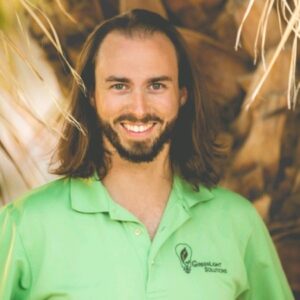
Thank you for reading our blog! Leave a comment & share on social media.
➡ Get involved: Businesses | Students | Professionals | Colleges | Volunteer
➡ Support our sustainability initiatives: Donate Now | Give Monthly | Sponsor
➡ Follow us on social media: Facebook | LinkedIn | Instagram | Twitter
